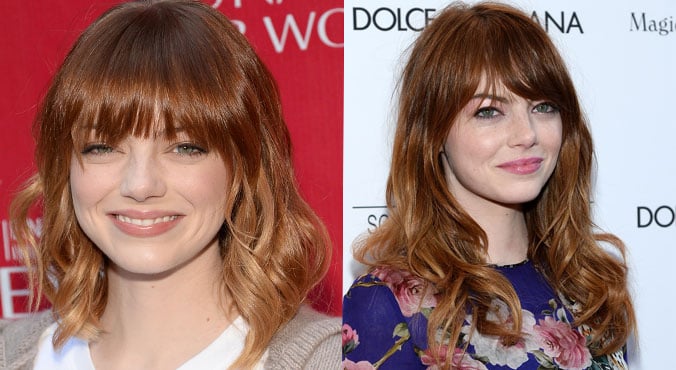
Image: Emma Stone in May, vs Emma Stone in July, via Getty
Recently, I went out (haha). Standing in line ahead of me was a girl scratching her scalp’s lower right side, pinching what could’ve been a dense clump of dandruff with her thumb and index finger (hey, we’ve all been there).
Then, with unprecedented levels of precision and accuracy – clearly she’d done this before – my new mate drew a medium-sized tape weft of fake hair from the base of her blow-dry and gingerly discarded it in an ‘Oh-Wut-I’m-Just-Dusting-The-Side-Of-My-Leg’ manoeuvre.
This is why we can’t have nice things.
As far as beauty treatment prejudices go, the humble weave sits somewhere on the streaky-self-tan/ mink-lash-mishap spectrum. Yeah, everyone from Brynne Edelsten to Beyoncé enlists extensions to fill out their hair... In fact, almost every woman you see on TV has tape-in hair, as much for volume as for length. But somewhere along the line, synthetic wraps got a bad rap.
Having enjoyed a four-year (on-again, off-again) flirtation with these bad boys, I think its safe to say I’m well versed on all things weave. So, if you’re thinking of extending, here are the mane things you need to know. (Sorry...)
Which hair extensions should I get?
With more choices available than than in the nut aisle of a supermarket, picking the right extensions can be confusing. Clip-ins are a great place to start: relatively non-committal, easy to acquire and ideal for nights when you want to get your Lara Bingle Lob on. You can get clip-ins for between $100 and $300 - ask your hairdresser to hook you up. Your hairdresser can cut you clip-ins to work with the style you already have, and teach you exactly how to put them in.
For a more permanent fix, either opt for a weave (rows of hair are literally sewn into horizontal braids across your scalp) or tapes (the hairdresser applies two adhesive extensions over small partitions of your hair). Because weaves are cheaper, you’ll pay less for substantially more hair, but tapes mix in more subtly and have more breadth for styling. Personally, I prefer tapes.




























































































